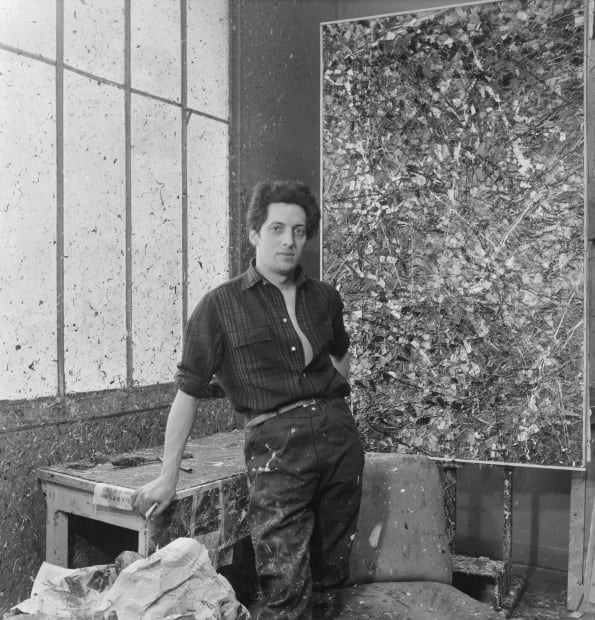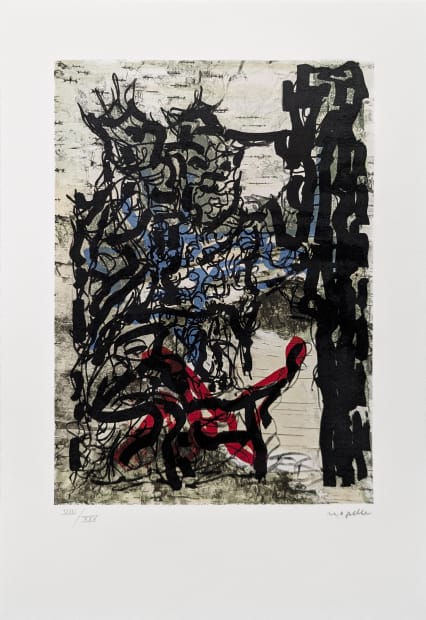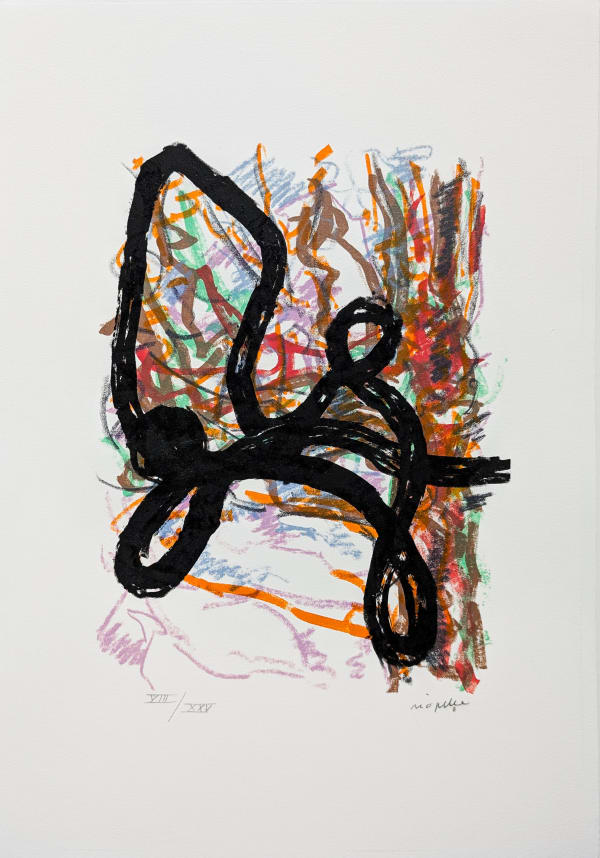Jean-Paul Riopelle (Canadian, 1923–2002) was a key figure in European Abstract Expressionism. Born in Montreal, he studied both traditional and avant-garde painting before fully embracing abstraction in the late 1940s.
He joined Les Automatistes, influenced by Surrealism, and moved to Paris in 1949, becoming part of Europe’s “second generation” of Abstract Expressionists. In the 1950s, Riopelle developed his signature “mosaic” technique, applying paint in thick, colorful blocks with a palette knife. His work evolved over time, incorporating printmaking, collage, and sculpture.
Notably, his 1969 fountain honoring Canadian hockey players stands at Montréal’s Olympic Stadium. Riopelle frequently returned to Canada, drawing inspiration from its landscapes. A Venice Biennale exhibitor and UNESCO Prize winner (1962), his work has been honored with major retrospectives at the Centre Pompidou and the Montreal Museum of Fine Arts. He spent his later years in Île-aux-Grues, Quebec, passing away in 2002 at the age of 79.

















